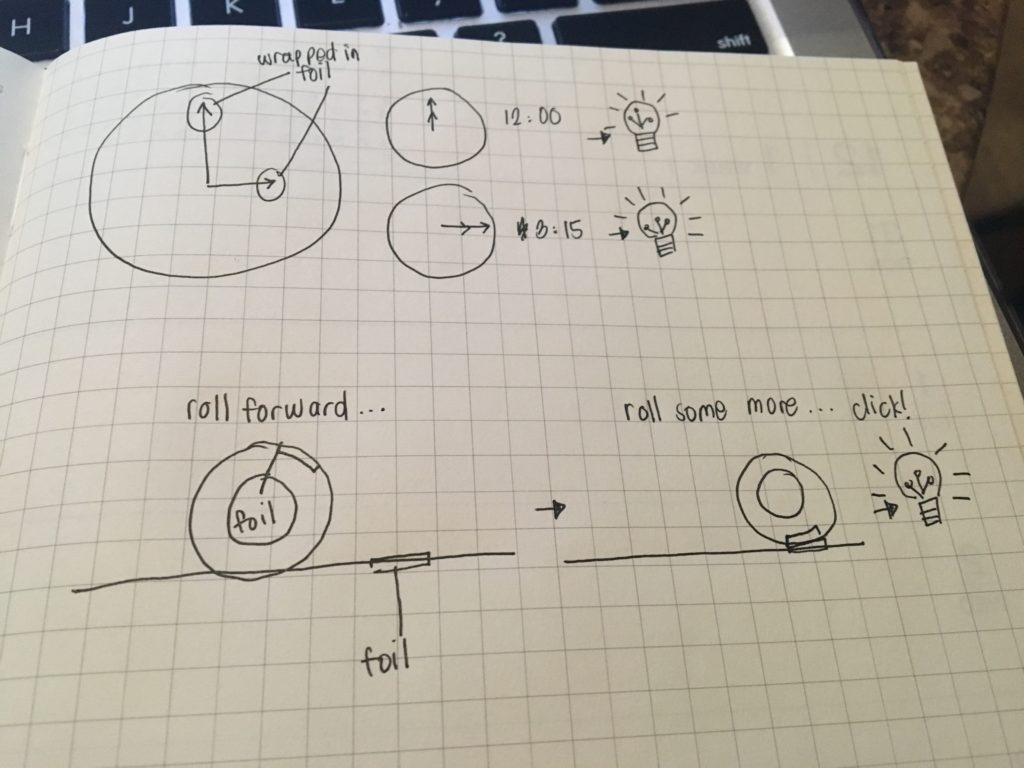
Earlier tonight, I came up with the idea of lighting an LED whenever the hour and minute hands of an analog clock meet– this could be an unconventional way to tell time. I dropped by Staples, excited to get my hands on a clock to break apart! I was redirected to cvs, “they should have it.” Moments later…
“Excuse me, where can I find clocks?”
“Socks?” asked the lady behind the counter.
To her co-worker: “Yo, where are our socks?”
Co-worker points vaguely towards ???
“That aisle, miss”
“Oh, I meant CLOCKS” ?
“Socks?”
Co-worker: “Clocks, the ones that tell time! Do we have clocks?!”
I left cvs with a roll of aluminum foil and proceeded to work on a new plan: to roll a wheel along a path so that when the foiled surface on the wheel gets in contact with the strip of aluminum foil at the end of the path, the circuit is “switched on” (aka closed). The LED could be “switched off” by rolling the wheel backwards (aka tilting the path the opposite way).
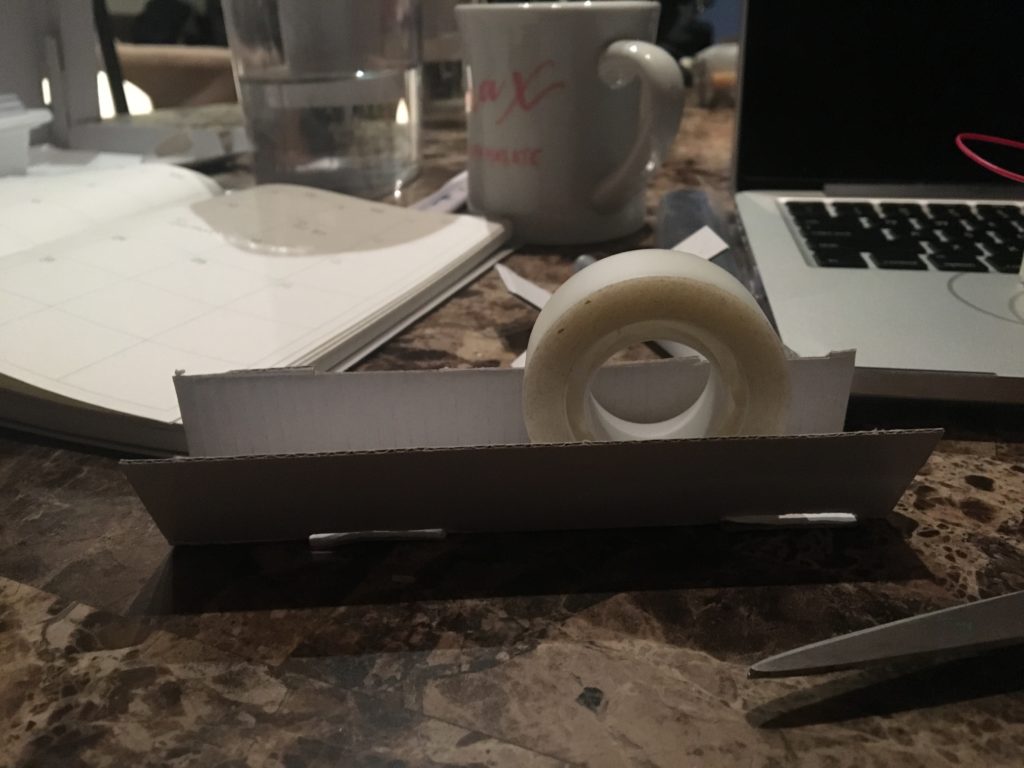
It just so happened that the box I cut this piece from had small slits on it. I took advantage of the slit and began thinking of how I could attach the wire to it without causing a bump in the path.
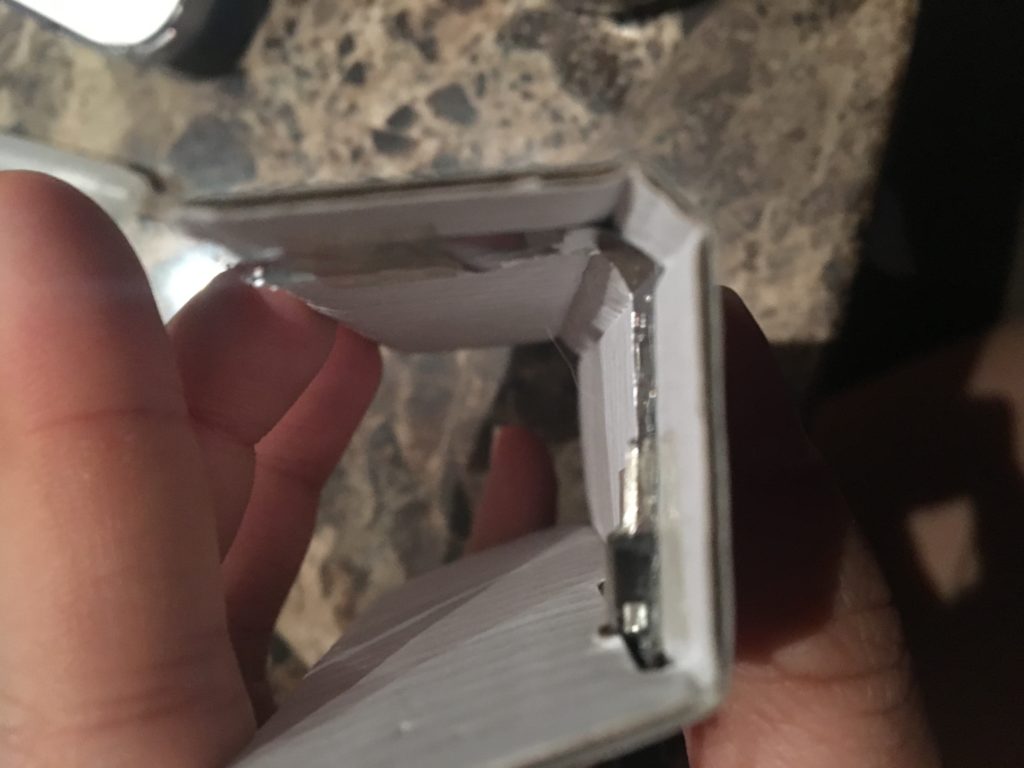
But attaching the wire to the path foil through this slit did not only cause a bump on the path, the tape covered too much conductible area.
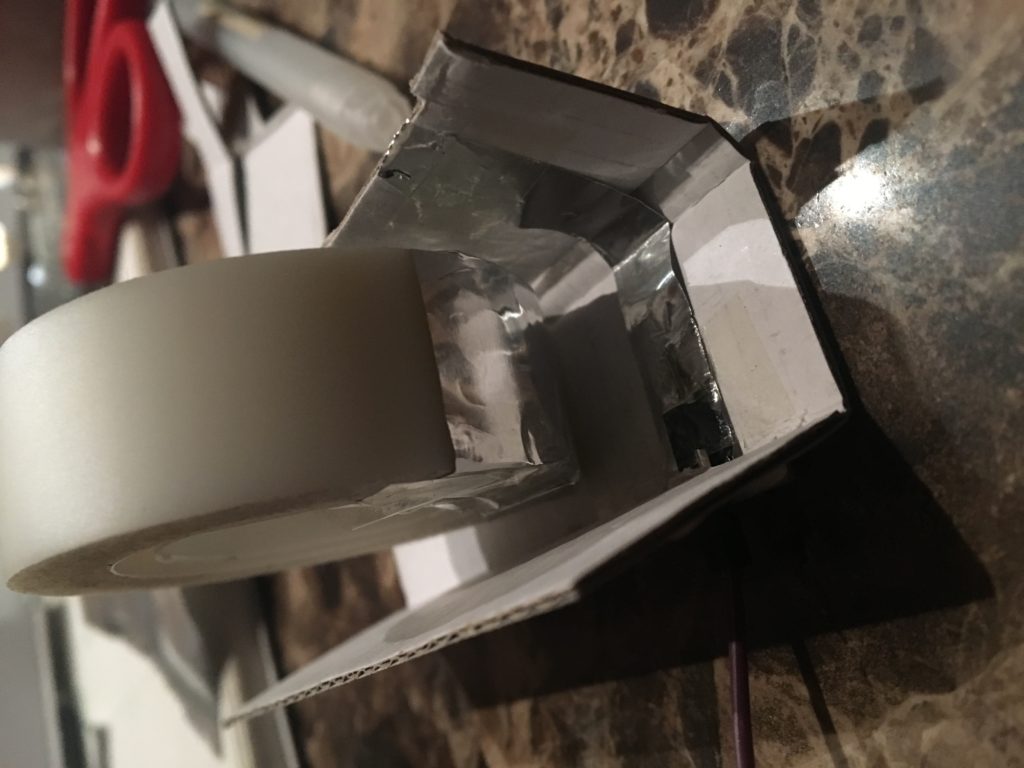
I stuck the wire end to the foil strip in every direction but none of them seemed to work smoothly so I cut a wider hole for the wire to move through and eventually found that I could attach a wire end to the wheel’s foil strip through this hole!
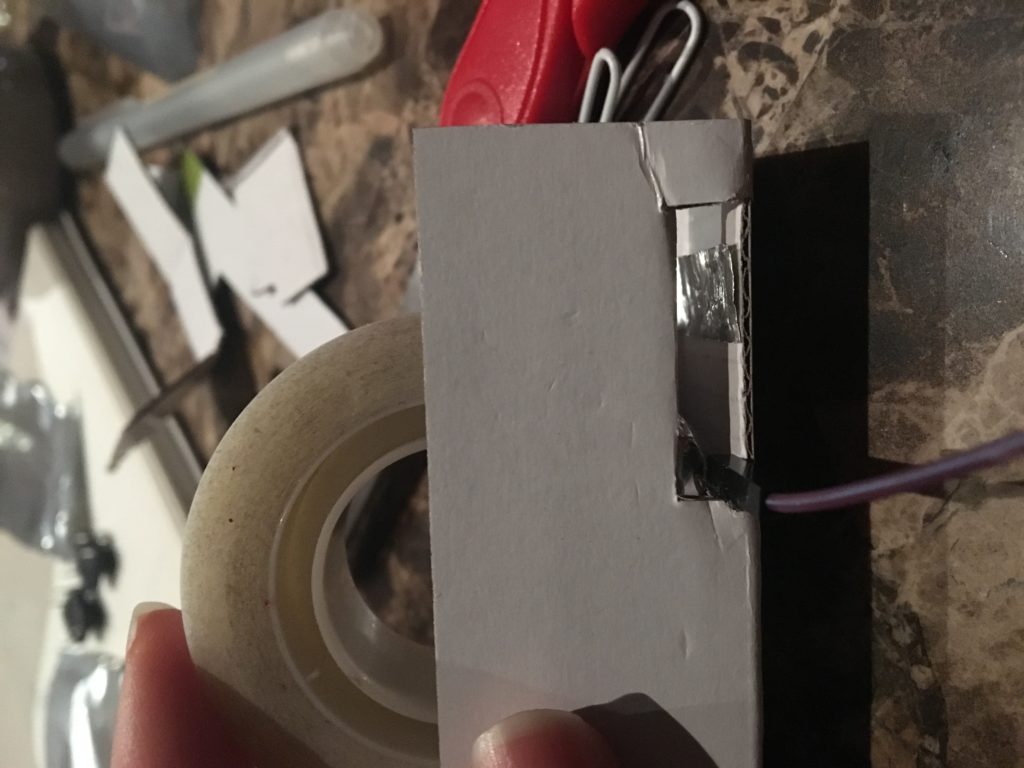
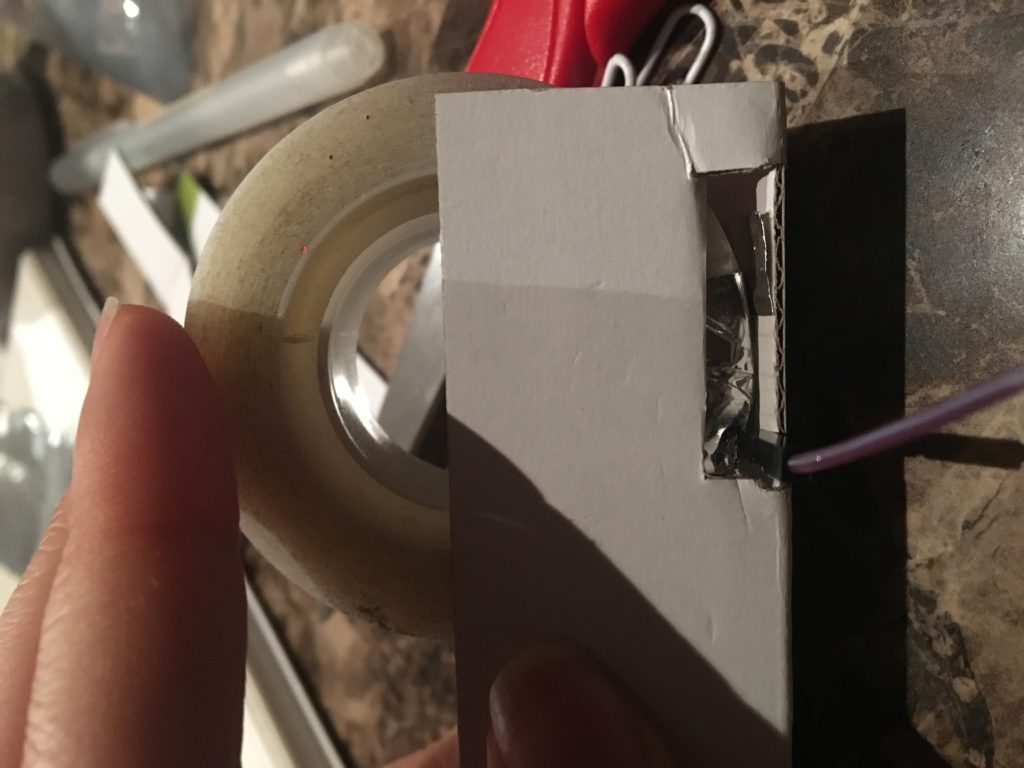
The last piece of the puzzle was affixing the other wire end to the path’s foil strip.
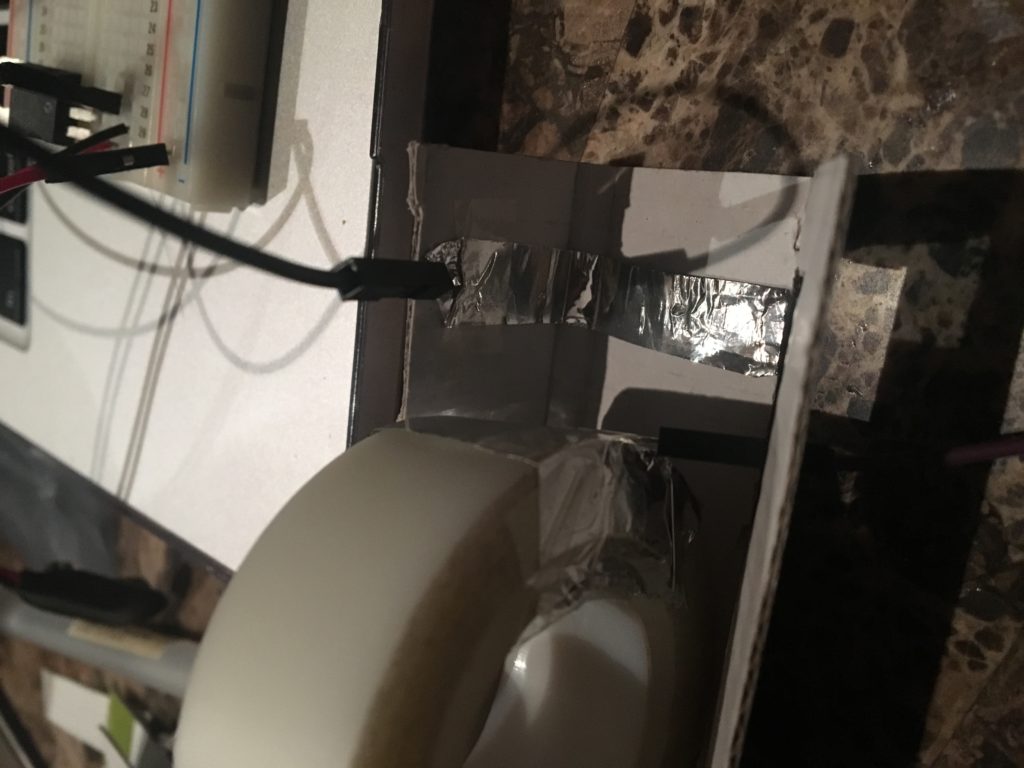
After multiple attempts, I arrived at this setup. It works but I think there still could be a better way to arrange this. ??♀️

https://vimeo.com/317397393
https://vimeo.com/317719609 (updated: Two LED’s + wheel switch hooked to microcontroller)
It worked! I made some changes to the path of electric flow. Instead of keeping the original single path with one of the wires attached to a moving object (the tape roll/wheel), I used the ‘puzzle’ technique where I left a gap between the two aluminum plates so that the wheel with a piece of foil attached to part of its surface could complete the flow.
I was thinking this could be used for detecting bike rack availability in dark places (basements, dark rooms, poorly-lit streets). ‘Shelving’ a bike with rubber tires could swing open a previously connected piece of metal and disrupt the flow of electricity so that someone who wishes to install his/her bike onto a rack can simply check for yellow lights (which indicate an available slot). If all the slots are taken, a red light will light up instead, immediately prompting the biker to find someplace else.
I tried making this work using the microcontroller, adding one more switch and two more bulbs (one yellow and one red one) to the setup; however, when both switches were set on “HIGH,” the second yellow one lit up instead of the red one. I hope to experiment more with this interaction tomorrow.
Awesome Max, well done. You can continue to use this basic idea for a number of projects.